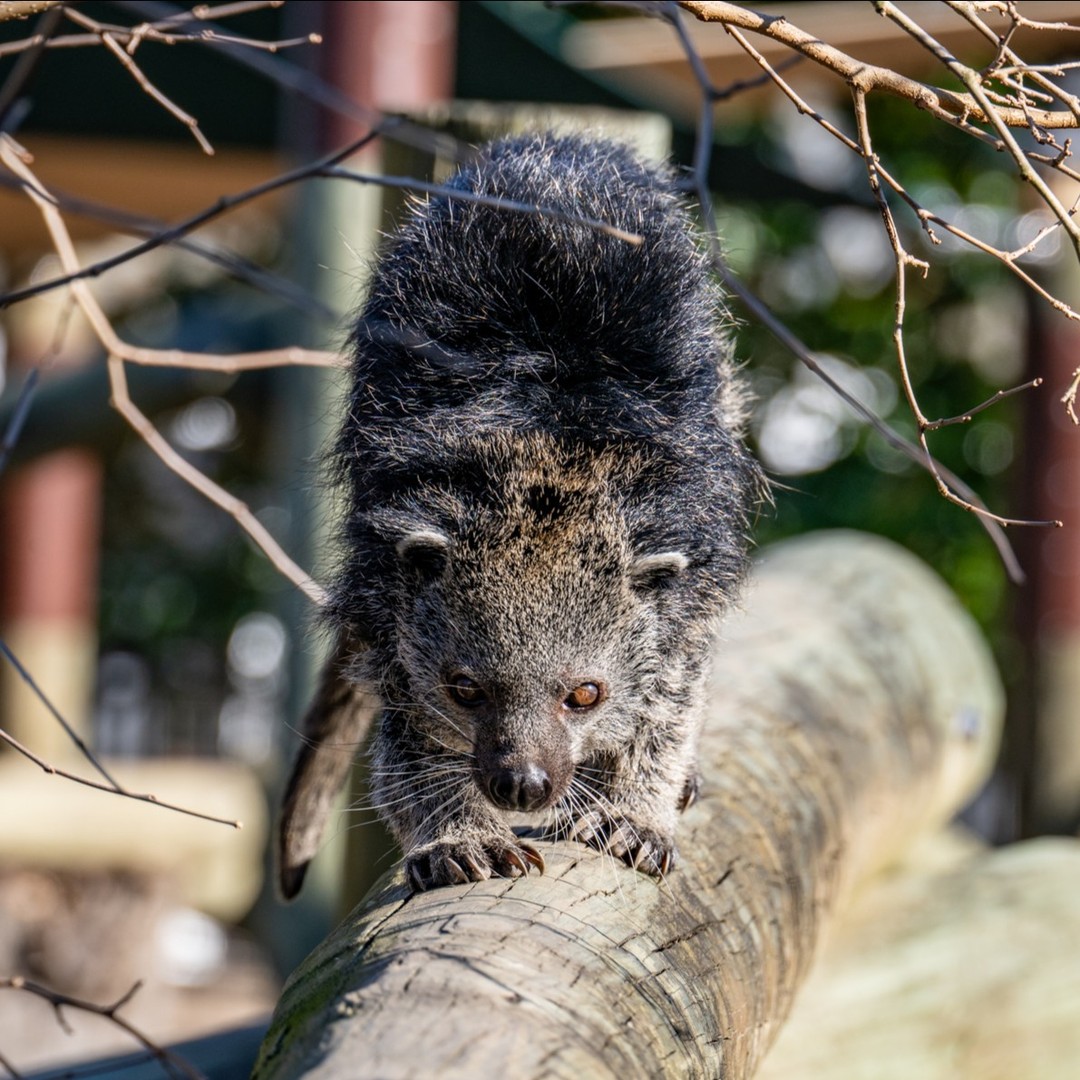- Overview of Binturongs and their classification within the animal kingdom
- Adaptations of binturongs, focusing on their prehensile tail
- Habitat and behavior patterns, particularly arboreal lifestyle
- Conservation efforts and the role of zoos in protecting binturongs
- Introducing Tasik and the educational experience at Asia: Trail of the Tiger
Binturongs, often referred to as bearcats, are intriguing creatures that defy simple classification. Despite their nickname, they are neither bears nor cats. Instead, they belong to the family Viverridae, which also includes civets and fossas. This classification places them within a group of medium-sized mammals sharing similar ancestral traits. Binturongs have a distinct appearance characterized by coarse black fur and a long, bushy tail, setting them apart in the animal kingdom. Understanding their taxonomy clues us into their evolutionary history and ecological niche.
One of the binturong’s most fascinating features is its prehensile tail. Among carnivores, only binturongs and kinkajous possess this trait, highlighting their evolutionary adaptation to arboreal life. The prehensile tail serves as a fifth limb, giving the binturong stability and dexterity as it traverses tree canopies. This adaptation allows them to grasp branches securely, minimizing the risk of falling and enabling efficient movement in their forested habitats. The tail’s utility extends beyond locomotion; it plays a role in communication and balance, crucial for a life spent largely above the ground.
Binturongs primarily inhabit the dense, tropical forests of Southeast Asia. Their arboreal lifestyle demands keen adaptations, such as excellent climbing skills and a robust physique. They are primarily solitary, exhibiting crepuscular behavior, meaning they are most active at dawn and dusk. Binturongs are omnivores; they consume a varied diet of fruits, leaves, small animals, and insects. Their keen sense of smell guides them through the forest, helping locate food. Interestingly, binturongs are also known for producing a scent reminiscent of buttered popcorn, which is used for marking territory and communication.
Conservation of binturongs is critical, given their vulnerable status due to habitat destruction and illegal wildlife trade. Urban expansion and deforestation pose significant threats to their natural habitats. Conservationists emphasize the importance of preserving forest ecosystems and curbing illegal activities that endanger their survival. Zoos play a crucial role in raising awareness, conducting research, and participating in breeding programs. These efforts are pivotal in safeguarding the future of binturongs, ensuring that their populations remain viable and sustainable.
At the Asia: Trail of the Tiger exhibit, visitors can meet Tasik, a charismatic binturong ambassador. This encounter offers an educational journey into the world of binturongs, shedding light on their role within the ecosystem and the challenges they face. Through interactive experiences, visitors learn about the importance of conservation and the ways they can contribute to protecting these unique creatures. Tasik’s presence not only captivates audiences but also fosters a deep appreciation for binturongs and the biodiversity of their habitats.
Incorporating education, conservation, and a touch of zoological wonder, exploring the life of binturongs enriches our understanding of these remarkable animals. Their adaptations, behaviors, and the challenges they face highlight the intricate balance of nature and the role we play in preserving it. Through continued global efforts and localized initiatives, we can ensure that future generations continue to marvel at the splendor of binturongs in the wild.
*****
Source Description
Happy Binturongs, also known as bearcats, are neither bears nor cats. Rather, they belong to family Viverridae which also includes civets and fossas.
Binturongs are one of only two carnivore species with a prehensile tail! This important adaptation allows binturongs to spend their time high in the trees while minimizing the risk of falling, as they can grasp branches for support.
Don’t forget to celebrate with our binturong, Tasik, on your next visit to Asia: Trail of the Tiger!

